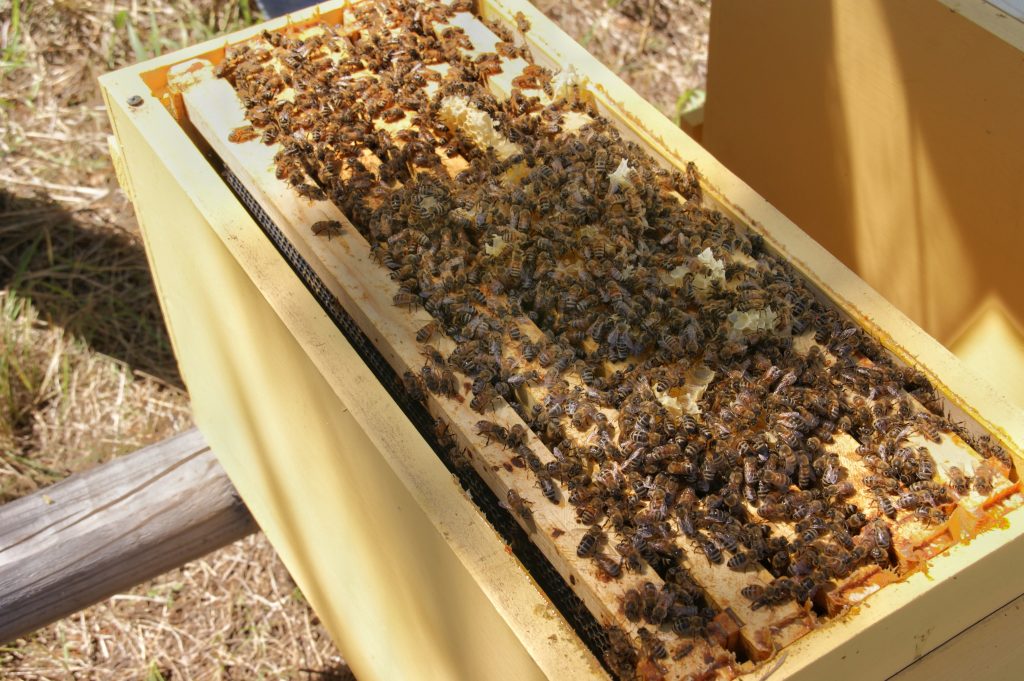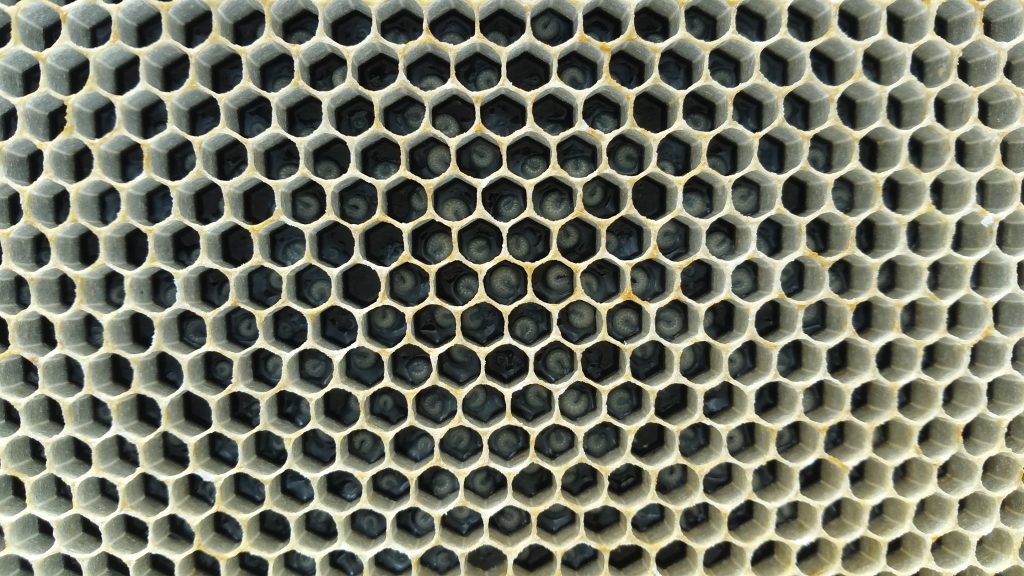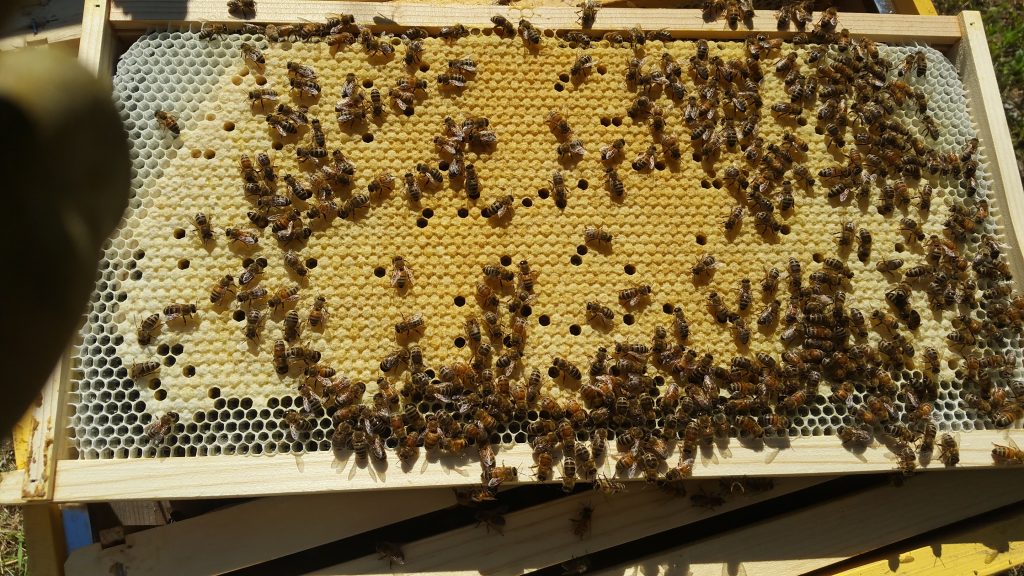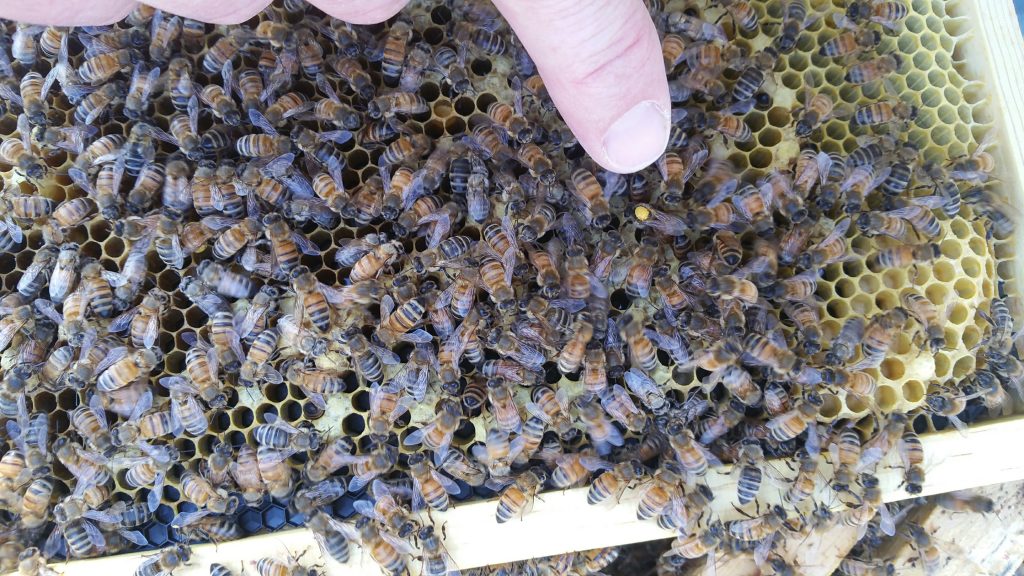
NUC is short for “nucleus colony of bees.” It has everything a large full spring-time colony has, only less of everything. Larger established colonies have 20-30 or more frames which are in multiple boxes stacked on top of each other to make up one hive containing 40,000 or more bees. In contrast, NUCs are generally sold as 4 or 5 frame NUCs and come in a single small box containing about 10,000 bees.
A good NUC should have a young (a few months old) local queen, which has been laying in the frame cells for several weeks. You should see at least two or three frames of eggs, larvae, and capped brood. There should be some pollen and honey stored on the frames. It is better if all frames have drawn comb, but some producers sell 5 frame NUCs with 4 drawn frames and 1 new frame, which should really be considered a 4 frame NUC. The NUC should be full of bees crawling on all frames. Think of crowded, as you’ll need to transfer to a large hive box ASAP, when you get them home. NUCs are a great easy way to get started. All you need to do is transfer frames to a larger box and you are done setting up.
There are things to watch for when buying NUCs. Things even new beekeepers can watch for. When picking up your NUCs, ask to look inside. The first thing you should check is the amount of bees. You should see lots of bees all over the frames and filling the space between frames. That’s about 10,000 bees. Second, ask to see a frame with eggs and brood so you know the queen is laying. This is a good time to also look at the drawn wax the eggs are in. Fresh wax is whitish-yellow but don’t expect that. More likely the wax will be light yellow to darker brown which is fine. Very old wax is dark, almost black in color. If you find this, think about asking for a refund and go somewhere else.


An added touch for new beekeepers is if the queen is marked. It’s always exciting to find the queen. She will be easier to spot if marked. Also, a good supplier should guarantee that your queen continues to lay eggs for 30 days.

Ask about the genetics of the queen. From what stock was she reared from? Was the stock wintered in northern states? Where was she mated? Ask your supplier if there is a chance of genetics from Africanized Bees. Ask how they treat for Varroa mites.
With a young laying queen NUCs will expand into a full size hive in a few short weeks ready for the summer honey flow.
